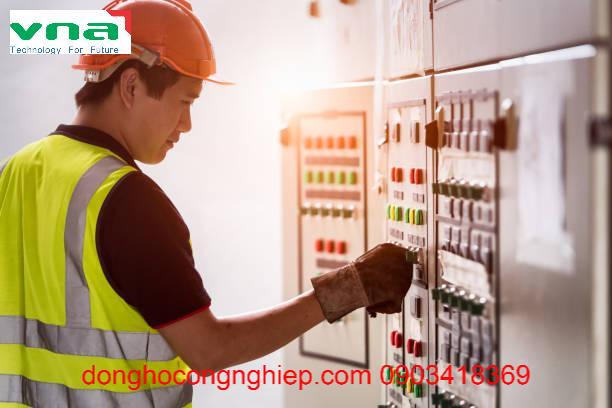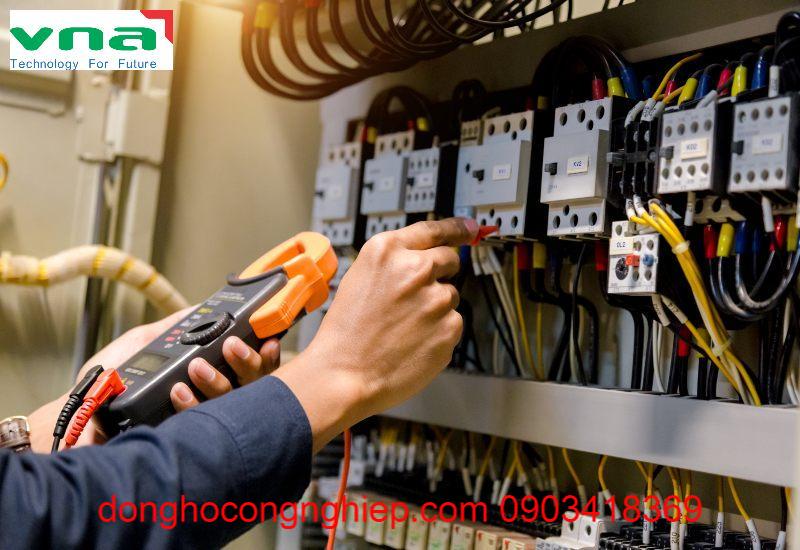Engineering Service
Industrial electrical connection: safe – effective – professional
Electrical systems play an extremely important role in the operation and operation of factories and industrial enterprises. Industrial electrical connection is the job of connecting electrical equipment and electrical wires to form a complete electrical system, ensuring a safe and effective electricity supply for production activities.
What is the industrial electrical connection?
Industrial electrical connection wiring is the process of connecting electrical components such as motors, transformers, electronics, and other electrical equipment in an industrial system. This process involves using wires, cables, connectors, sockets, and other accessories to create precise and safe electrical circuits.

Industrial electrical connection process
Determine requirements:
Before making connections, it is necessary to determine the requirements for voltage, current, equipment type, and other system parameters. This ensures that electrical components are selected and connected under the specific requirements of the system.
Select and prepare materials:
Based on system requirements, select appropriate wires, cables, connectors, and other accessories. Ensure quality and compliance with voltage and current safety standards.
Prepare tools and equipment
To make industrial electrical connections, you need the necessary tools and equipment such as cutting pliers, crimping pliers, cutting knives, heat shrink tubes, and voltage and current meters. Check and ensure that these tools and equipment are working properly and are safe.
Prepare the working environment:
Before making connections, ensure a safe and suitable working environment. If necessary, cut off the power supply and take safety measures such as isolation, anti-static discharge, and use of protective equipment.
Make connections:
According to the predetermined plan and design, connect electrical components together using appropriate methods and tools. Ensure that wires, cables, and connectors are cut, crimped, spliced, and attached correctly and securely.
Testing and testing:
After completing the connections, perform system testing and inspection to ensure that there are no problems and that the circuits are functioning properly. Use voltage and current measuring devices and other test tools to test connections, ensuring that they meet safety standards and codes.
Protection and maintenance:
Once connections are completed, ensure that the system is properly protected and maintained. This includes the use of protective devices such as circuit breakers, fuses, and other protective accessories. Perform routine maintenance work to ensure the safety and performance of the electrical system.
The importance of industrial electrical connection
Industrial electrical connection plays an important role in ensuring stable and safe operation of industrial electrical systems. If connections are not made properly, problems such as power loss, short circuits, danger to users, and damage to equipment may occur.

Compliance with industrial electrical connection procedures and rules is extremely important to ensure the safety of workers and property. In addition, the correct connection also helps increase the performance and reliability of the electrical system, minimize downtime, and increase production productivity.
Instructions on how to set up professional electrical cabinets according to technical procedures
Calculate detailed technical specifications to select the necessary equipment
With cabinet distribution infrastructure: it is necessary to determine the number of loads, and the quantity of distribution to calculate the cost of other electrical equipment such as circuit breakers, starters, relays, and wires,… so that it is reasonable and economical. cost-effective and efficient.
Control of electrical cabinets: You need to read the regulations on the requirements of electrical cabinets and then calculate to choose equipment with appropriate parameters to meet customer requirements.
Draw a layout diagram of the devices as well as a diagram of their operating principles
Design plays an extremely important role in the production process of industrial electrical cabinets. This is the first step of the production process and the most important step in the whole process, so it requires people with many years of experience to be careful and check thoroughly to avoid errors when completing the next steps. Start over.
When designing electrical cabinets, you need to pay attention to ensuring all necessary features such as optimizing production costs to reduce product prices to best compete with competitors. In addition, it is necessary to focus on the fastest and easiest maintenance and repair work, as well as the ability to expand in the future when needed.
Carry out work and install the electrical cabinet shell
When choosing electrical enclosures for home equipment, we should prioritize electrical enclosures with powder-coated surfaces. On its cabinet, it will be defective to mount lights, clocks, buttons, and other devices.

This error can be machined by CNC machines (for complex electrical cabinets requiring high precision and aesthetics) or can be machined by hand. The remaining folding and finishing stages will also be performed in parallel and the product will be produced on modern mechanical chains.
When installing equipment on industrial electrical cabinets, the following principles must be followed:
- The main devices such as the power meter, amperage, timer, and indicator panel are placed at the same level and visibility, convenient for the operator to observe and operate.
- Other control devices such as buttons and rules will be placed below the lever for easy control and press the button to operate the device. Usually, buttons and rules are designed in the same horizontal or vertical row. For locations with external error messages such as ventilation fan locations, input and output wiring locations, etc., a screen must be installed to prevent harmful animals such as mice and insects from entering and damaging the device. . .
Reasonably arrange equipment inside the cabinet
If you already have a design, you just need to install it. If the cabinet does not have a design, you should minimize use, save electrical wires, enhance appearance, increase equipment life, and operate more stably. The most reasonable arrangement is added as follows:
- A synthetic circuit breaker is located in the upper left corner.
- The right corner will mount the bridge, power source, and protector.
- Branch projects are given priority to go down to the row below.
- Next is the controller and intermediate relay.
- Next are the switches and thermal relays.
- Control devices such as buttons and rules will be arranged below. The bottom is where the fighting ball is attached.
Connect electrical wires scientifically
Industrial electrical connection wiring systems must be neat and scientific, the terminals must have clear colors and numbers to facilitate control and maintenance when necessary.
- Signal lines and power lines should have separate routes, and have good fire resistance and insulation, these two lines should be as far apart as possible.
- For highly sensitive signal lines such as encoders and communication lines, anti-interference shielding is required.
- Wire the power circuit first, then the control part.
- Note that when connecting the control wire and the power circuit wire, they must be perpendicular to each other.
Power up and idle
After completing the wiring, we need to test run and carefully check the system with a multimeter before energizing the industrial electrical cabinet to see if there are any problems.
Communications
VIETNAM TECHNOLOGY DEVELOPMENT AND TRANSFER JOINT STOCK COMPANY.
Office: VT09-BT02 – Xa La Urban Area – Ha Dong – Hanoi.
Tax code: 01 05 158 192
Home page: www.vnatech.com.vn
Website: http://donghocongnghiep.com/
Email: contact@vnatech.com.vn


